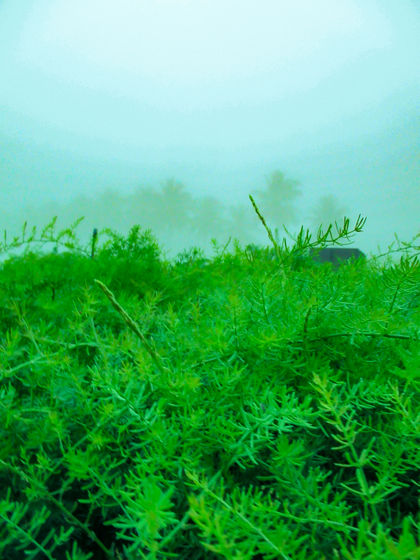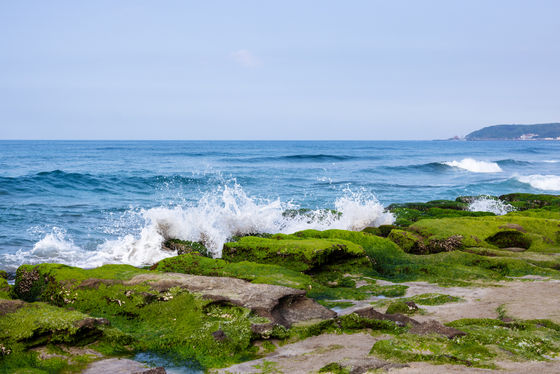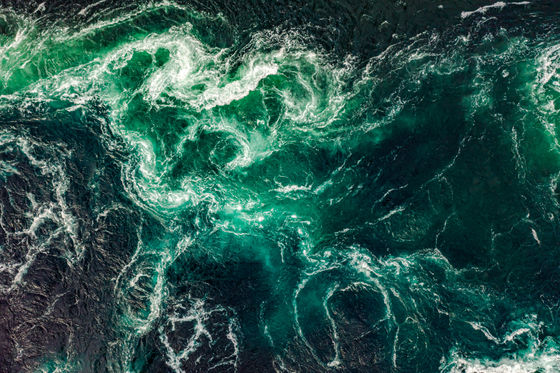Earth's oceans may have once been green instead of blue

Although it is common knowledge in modern times that the ocean is blue, billions of years ago it may have been green instead of blue. A team from Nagoya University proposed the 'green ocean hypothesis' and explained why it is thought to have been green.
Archaean green-light environments drove the evolution of cyanobacteria's light-harvesting system | Nature Ecology & Evolution
The ocean that nurtured life in the ancient past was 'green'! ~Understanding the evolution of photosynthetic organisms on Earth 2.5 billion years ago~ - Nagoya University Research Results Information
https://www.nagoya-u.ac.jp/researchinfo/result/2025/02/-25.html
About 2.4 billion years ago, the Earth was in a different environment than it is today. During this time, photosynthetic prokaryotes called cyanobacteria produced oxygen, which is thought to have triggered the Great Oxidation Event , which increased the Earth's oxygen concentration.
Modern photosynthetic organisms on Earth use a pigment called chlorophyll, which absorbs mainly blue and red light from sunlight, to perform photosynthesis. However, cyanobacteria, which perform photosynthesis in a similar way, have the unique ability to use green light by using a pigment called phycobilin in addition to chlorophyll. However, it was not clear why cyanobacteria came to use phycobilin or why they needed green light.

Taro Matsuo of Nagoya University and his colleagues focused on the ancient environment of the Earth and predicted the distribution of oxygen, reduced iron, and iron hydroxide in ancient underwater environments.
About 2.4 billion years ago, the Earth was in a 'poor oxygen environment' with almost no oxygen in the atmosphere, high carbon dioxide levels, acidic underwater environments, and relatively rapid land erosion, causing large amounts of iron to flow into the ocean. It is believed that this caused divalent iron, which is not found in the modern ocean, to be widespread throughout the ocean.

When photosynthesis, which involves the production of oxygen, takes place in such an environment, oxidation gradually begins and the divalent iron dissolved in the water changes into iron oxide, which begins to float in the water.
Matsuo and his colleagues conducted simulations and experiments based on this assumption of an ideal environment, and found that iron oxide in the ocean efficiently absorbs everything from ultraviolet light to blue light, and that water absorbs red light, meaning that the ancient oceans may have been flooded with green light.
However, an environment filled with green light was inhospitable to organisms that photosynthesize using chlorophyll, which absorbs blue and red light. Matsuo and his team claim that cyanobacteria were the organisms that evolved to absorb the remaining green light.

Matsuo and his team genetically engineered existing cyanobacteria to simulate past natural selection, suggesting that cyanobacteria that acquired phycobilins specialized for the color green, called 'phycoerythrobilins,' may have thrived in green light environments. It is possible that the environment in which green light is dominant acted as a selective pressure, resulting in the acquisition of the trait of efficiently absorbing green light.
Matsuo and his colleagues said, 'The green sea, created by the activity of photosynthetic organisms, became a place where life could thrive by efficiently blocking ultraviolet light,' and 'The existence of the green sea may also be an indicator of the presence of life on distant planets.'
Related Posts:
in Science, Posted by log1p_kr







